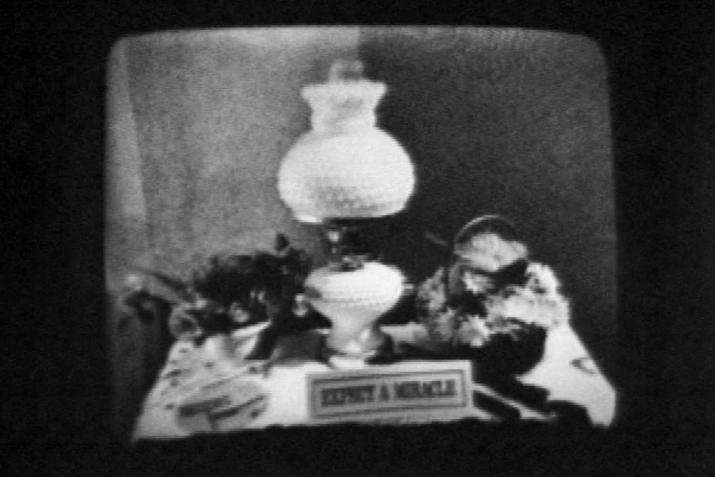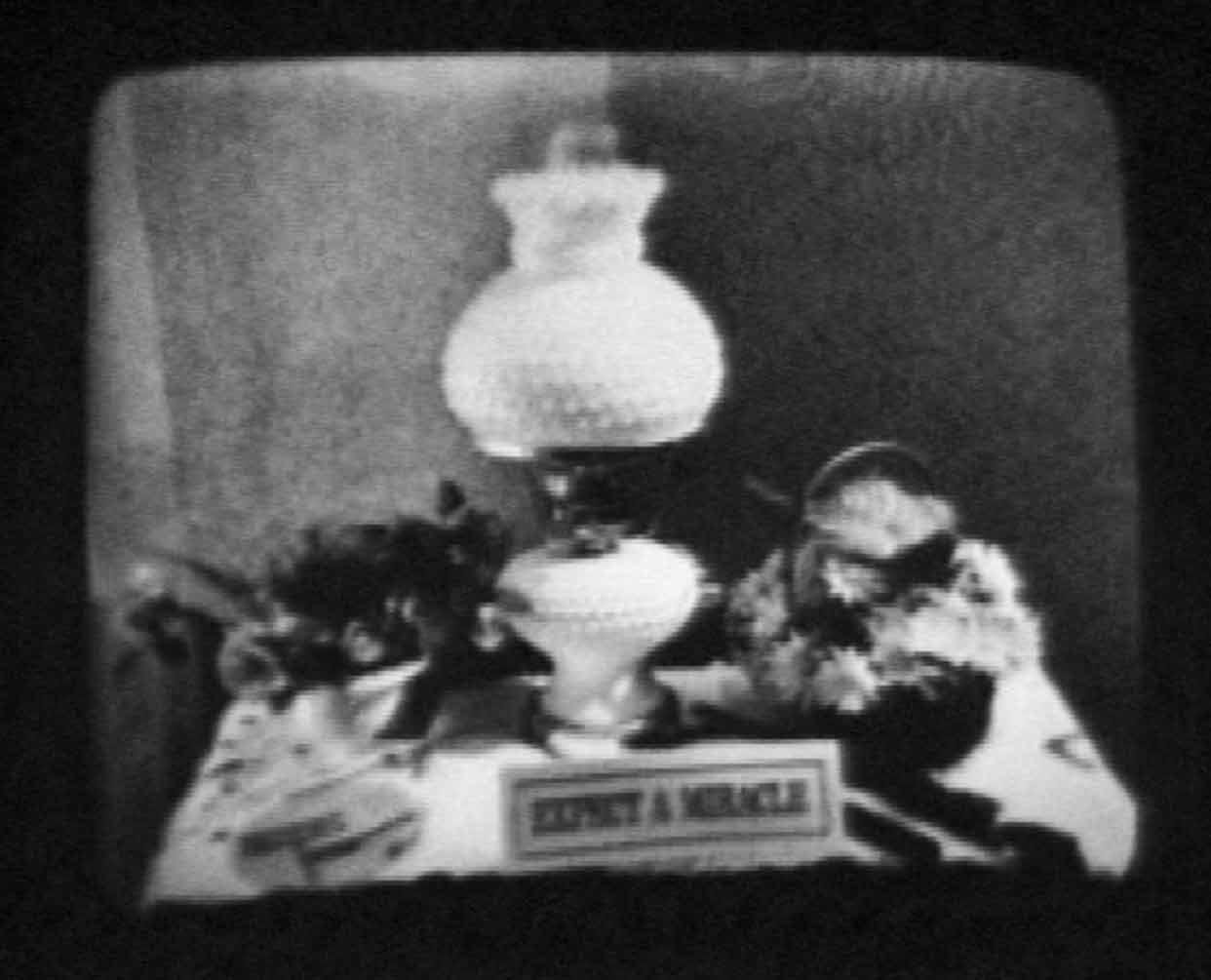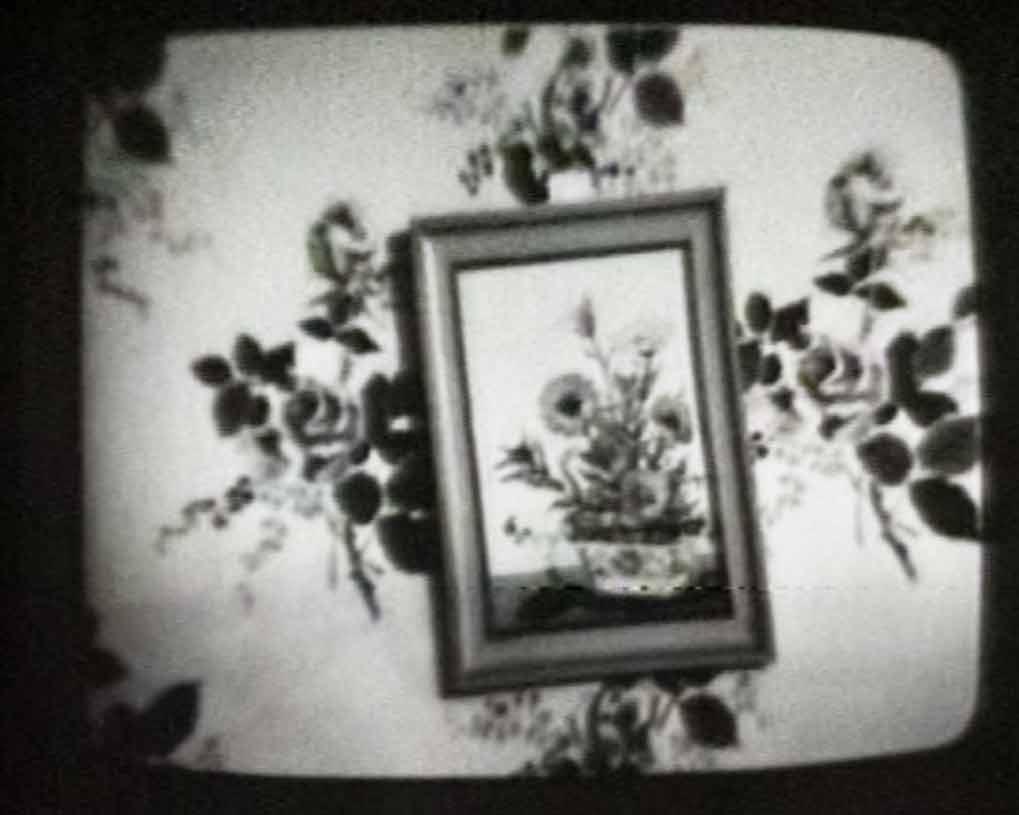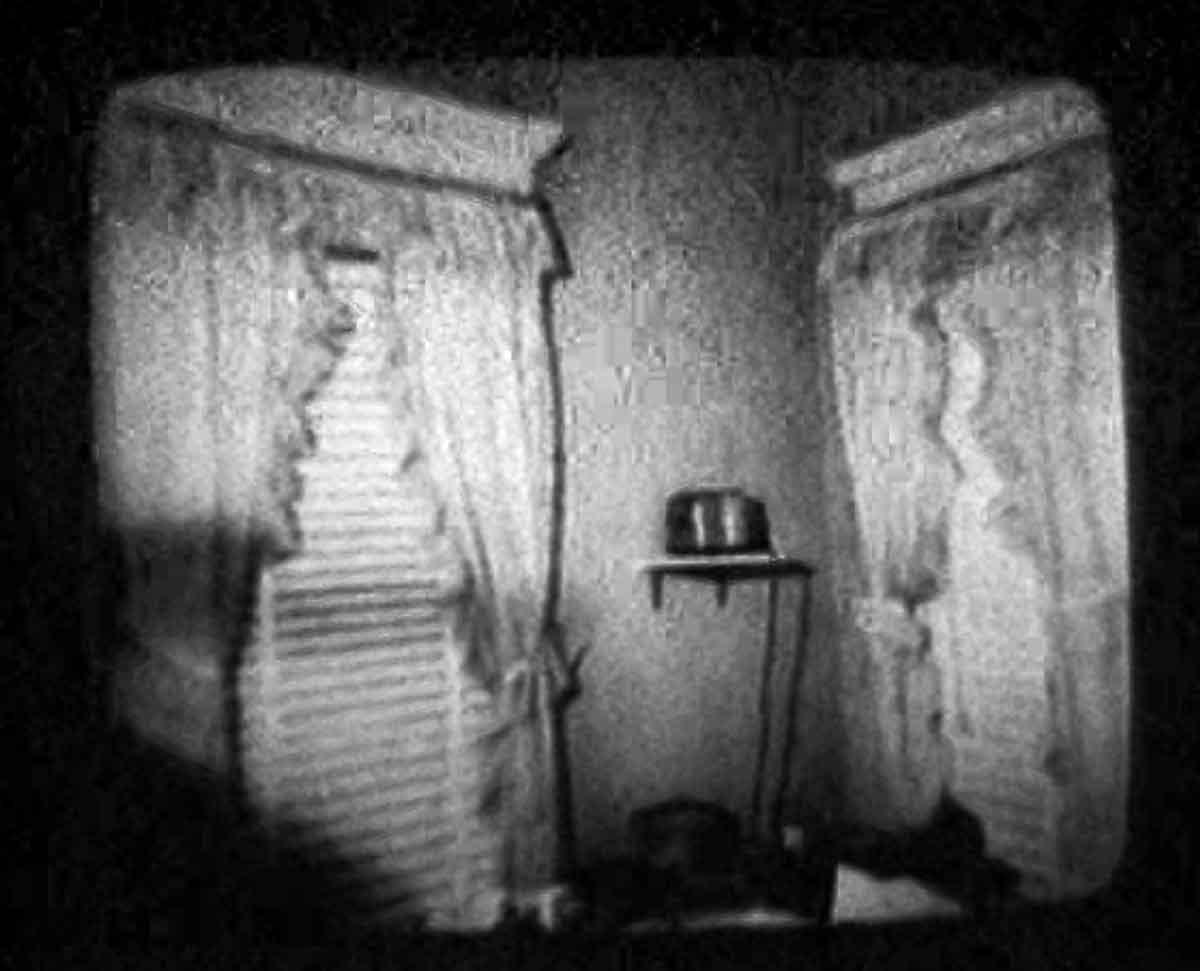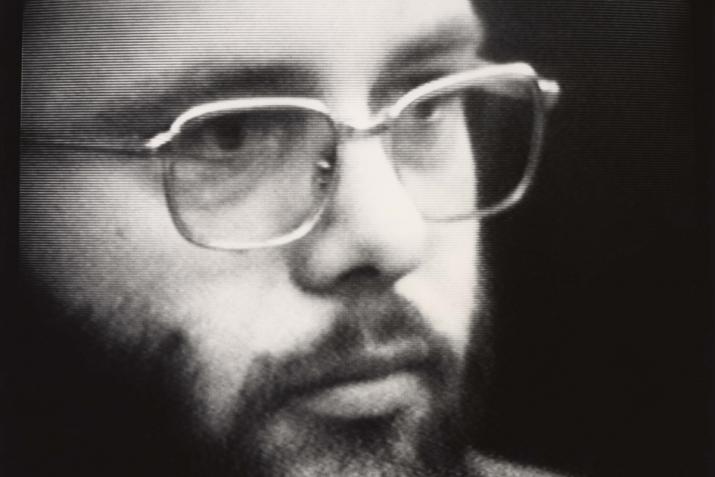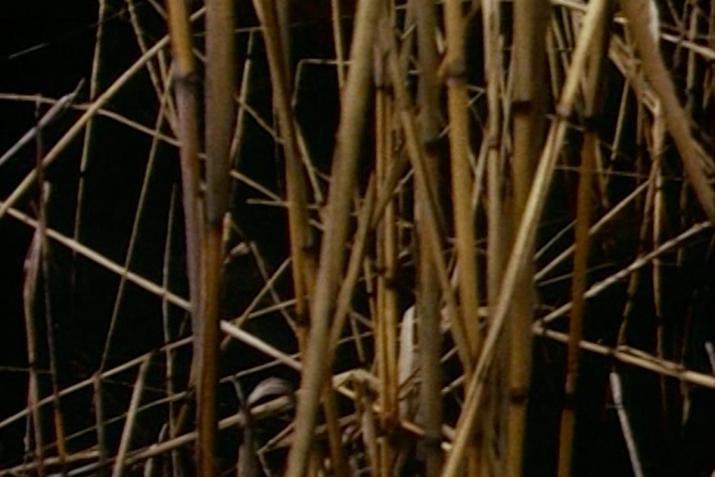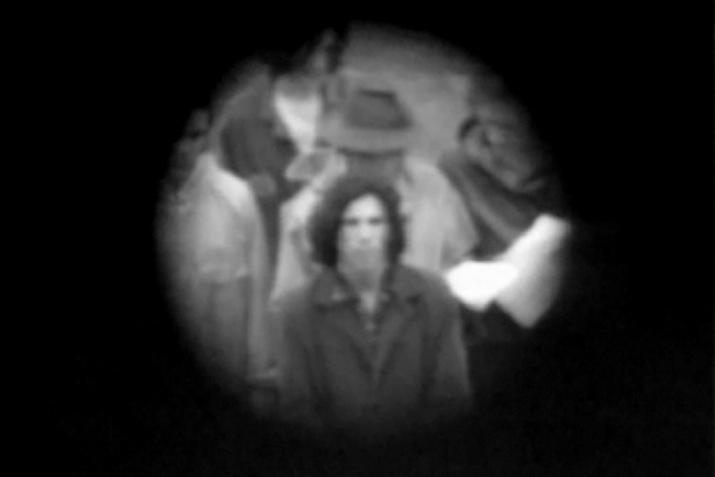Video, black and white, sound
Duration: 9 minutes, 12 seconds
© Holt/Smithson Foundation / Licensed by Artists Rights Society, New York. Distributed by Electronic Arts Intermix, New York and Video Data Bank, Chicago.
Nancy Holt’s terrain in Underscan is the home of her aunt Ethel Tate in New Bedford, Massachusetts which is presented in still images, alongside excerpts from letters written to the artist. In this video she works with the glitches in communication, in recollection, in the very technology of video recording, paying particular attention to her aunt's poignant experience of aging.
In 1974 Holt described this video in the Autumn edition of the New York magazine Art-Rite: “A series of photographs of my aunt’s home in New Bedford, Mass. have been videotaped, and re-videotaped from the underscanning monitor screen, which is framed within the final tape making a visual distance at three removes. Underscanning changes each static photo image, as it appears, from regular to elongated to compressed or vice versa. Excerpts from the letters of my aunt spanning ten years are condensed into nine minutes of my voice-over audio. Certain yearly occurrences repeat, making an auditory rhythm, which coincides with the cycle of visual changes.”
Received between 1962 and 1972, the letters received by Holt describe the mundane and dramatic facts of Tate’s life. Carlota Schoolman, a key figure in early video art, describes Holt explained to her that reading the letters out loud was “a study in entropy. Things just changing and falling apart over time as the woman and the house were aging.”
